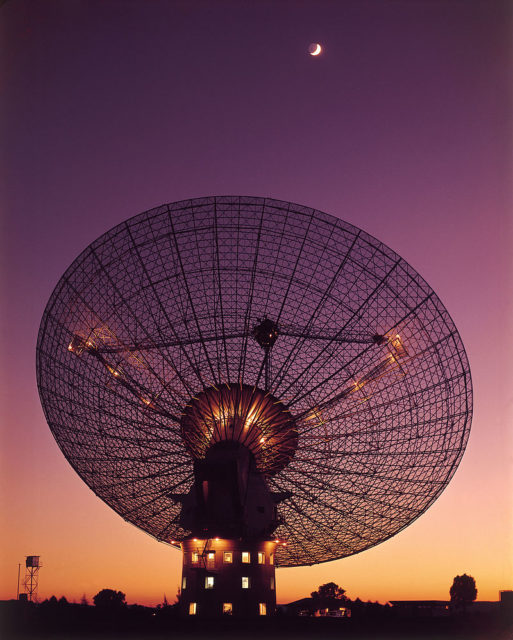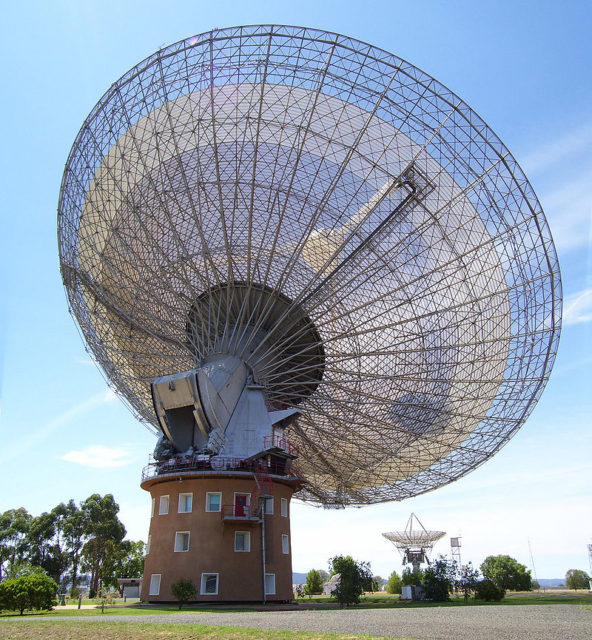Astronomers at a famous radio telescope in Australia have finally solved a 17-year-old mystery. Australian astronomers have for many years had to deal with interference that appeared once or twice a year. Due to the small amount of the interference, it was difficult to locate the exact source, but the astronomers believed that it was caused by Mother Nature. As it turned out, the explanation is simpler than they ever thought.
Previously it was assumed that the interference came from lightning strikes close to the telescope. The real culprit was the station’s microwave oven being used by staff members to heat their lunches. The signals were first detected in 1998, and astronomers assumed that it was due to the atmosphere, since the signals were transmitted from within a 5 km radius.
The signals, known as perytons, occurred once or twice a year and kept the astronomers stumped. It must have been lightning, was a natural assumption made by many. Simon Johnston of CSIRO, head of astrophysics, said that the signals were local but hard to locate.

The perytons caused a lot of disruption, and the source was only discovered on January 1, 2015. The reason for the discovery was the installation of a new receiver. After its installation, it was able to pinpoint the disruptions. The receiver began immediately picking up 2.4 GHz radio-wave transmissions. This same frequency led investigators to the staff microwave, as this is the frequency of a standard microwave.
The staff members that maintain the facility used this microwave. The oven was only emitting the signal when the telescope was pointed in its direction, and it wasn’t until someone opened the microwave that the disruptive perytons were released. It had to be opened midway through a heating cycle to emit the disruptive signals. The astronomers themselves did not work on site at the facility and thus didn’t make the connection right away.
The conclusive proof that the microwave was the cause of these suspicious signals was that the interference only occurred during the daytime; as it turns out, this was because there was no staff during the night using the microwave.
The fact is that human interference in the study of the universe is a common nuisance. Simon Johnston has noted that many factors influence their work and, although the famous radio telescope was built in a quiet zone, it doesn’t function in one. The famous Parke’s Observatory is notable for its part in the history of the moon landing and was shown in the movie Dish. It is no longer capable of its initial observation capabilities as the area is now encroached upon by radio noise from FM radios, satellite television, wireless internet, and mobile telephone technologies.
Astronomers are more hopeful than before that this won’t be the case, in part because the expected new telescope is being constructed in the quiet zone. This is described by Johnston as the quietest place on earth.
Recent years have seen many astronomers frustrated by the interference caused by light, noise, and other human interference. A case in point is the 1967 potassium flare star discovery by researchers from Haute-Provence observatory – it turned out to be nothing more than someone striking matches in the vicinity of the observatory.
The most recent notable incident was the objection by experts to the development of the coal seam project. Astronomers from northwest New South Wales broke their silence and voiced their concerns, stating that should the project go ahead the amount of light pollution would halt any progress they may have made in the observation of the universe. Work such as this requires the utmost dedication, in silence and without interference from radios, satellite television, and wireless devices, The Guardian reported.

This is why Johnston believes that Australian Square Kilometre Array Pathfinder (ASKAP) will be a victory for astronomers. Its area will be legislated to be restricted under the astronomers’ control. Therefore they will no longer have to worry about disruptive human behavior in their research. Any person who requires access will need the proper licenses to the area dubbed the radio quiet zone.
Be that as it may, the work that scientists in this field undertake is of significant importance to society as a whole. And with less interference from microwaves, radios, and mobile phones the better for researchers such as Johnston.
